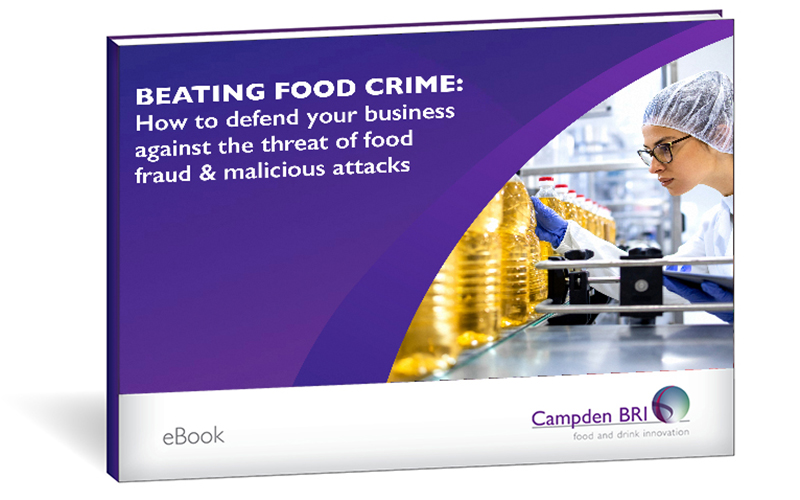
Lessons learnt from previous food fraud incidents
20 May 2024 | Richard Leathers, Global Quality Lead
Food fraud is estimated to cost the global food and drink industry $30 to $40 billion per year.
Whilst there is increasing focus on this issue, it is important to remember the simple lesson that if something has happened before, it may happen again. So, even if control measures appear robust, food business operators must not be complacent against the threat of food fraud. For materials with a high likelihood of food fraud, a full suite of controls is often necessary (rather than only one or two).
With all this in mind, there are lessons to learn from previous incidents in order to prevent reoccurrence. Whilst there are always new ways that fraudsters come up with to both commit food fraud and evade detection, the lessons are still as applicable today as they were at the time of these incidents.
Just three high-profile food fraud incidents are covered here. For lessons from more examples – as well as factors contributing to food fraud, information on susceptible products, testing for adulteration and authenticity, and control measures against food fraud – check out our new eBook, “Beating food crime: How to defend your business against the threat of food fraud and malicious attacks”.
Download our FREE Beating Food Crime eBook today!
Win the fight against food crime – successfully defend your business against food fraud and malicious attacks.

1. Egg contamination with fipronil
In 2016/17, egg production was disrupted by the outbreak of avian influenza. A scandal ensued in which fipronil (a broad-spectrum insecticide approved for use in veterinary medicinal products for pets and as a biocide, but not permitted for use with food producing animals) was given to laying hens, which resulted in eggs in the EU/UK marketplace that were contaminated with fipronil.
Lessons learnt
Always consider the consequence of legitimate supply chain challenges and changes – and especially how these might be abused by the dishonest trader.

2. Illegal dye used in chilli powder
‘Sudan I’ dye has industrial uses but is not permitted for use in food, and it has been shown to be both genotoxic and also carcinogenic in rats. In 2003, it was reported by French Authorities that contamination of chilli powder adulterated with Sudan I was an issue (financially motivated food fraud to make the chilli powder appear more red). Measures were put in place within the EU to combat this.
In 2005, a batch of chilli powder (imported into the UK prior to these measures) was incorporated into Worcester Sauce, which was then used as an ingredient in a large number of consumer products. Almost 600 products had been recalled by the end of March 2005.
Lessons learnt
Raw material risk assessments must include knowledge of the cost/value-determining attribute of key materials (e.g. colour, protein, fat, water content or provenance, such as organic or protected status). This is in order to understand how these attributes might be fraudulently challenged, adjusted or abused for financial gain, so that you can factor this into your risk assessment, monitoring plan and control measures.
Furthermore, this incident demonstrates that fraud affecting an ingredient within a product can have wide-reaching effects, especially when the product is then itself widely used as an ingredient. Robust traceability and recall systems must be in place to ensure that the scale of any issue is fully understood and controlled.
3. Melamine in milk
Protein content is generally measured indirectly by testing for nitrogen content. Melamine is inexpensive and has a high nitrogen content, but it is not intended or approved for use in food and causes kidney damage when consumed in high levels.
In the rapidly developing and relatively unregulated Chinese dairy industry of 2008, there was opportunity and motive to water down milk and then hide the reduction in protein content by adding melamine. This took place at Sanlu (what was a Chinese dairy products company).
In 2008, the adulteration with melamine came to light, following its discovery in exported skimmed milk powder. The incident, which affected 294000 infants (including over 50000 hospitalised and at least six who died), is one of the largest food-safety linked incidents directly attributable to food adulteration.
Lessons learnt
Product quality attributes determined by indirect analytical methods may be prone to falsification through malpractices such as food fraud.
Do not underestimate the sophistication and level of planning that some fraudsters will go to. They are often not food safety experts, nor do they care about the consequence to the consumer – their aim is to make more money while going undetected.
Win the fight against food fraud
Despite increased awareness of food fraud, the issue is still on the rise.
As well as the existence of those seeking out food fraud to increase profits, there are also multiple global and local factors that create significant cost and availability challenges within supply chain challenges and further increase the risk of individuals and groups turning to food fraud and other types of food crime.
Our experts can help you to implement, validate and verify effective food safety management systems to protect against food fraud and malicious attacks. We help businesses to identify emerging risks and trends through horizon scanning, and provide support with devising and adapting your management systems and monitoring plans based on the changing risk landscape.
Alongside this practical support, we provide a wide range of relevant training and can also analyse your products and materials to test for potential adulteration and other food fraud.

About Richard Leathers
Richard Leathers joined Campden BRI in September 2011, and has worked in the food industry for 4 decades.
Richard started working with Dairy Crest and subsequently worked for both Heinz, Unilever, Best Foods and Kanes Foods. Working in the areas of HACCP and Quality Management Systems, Richard also has experience within the fresh produce sector, as well as analysis systems in the milling / baking areas, and is a BRCGS qualified lead auditor.
Richard has contributed to several publications and guidelines, including those for TACCP, VACCP and HACCP / Risk Evaluation and is also trained at advanced level by EHEDG (European Hygienic Engineering Design Group).
Download our FREE ‘Beating Food Crime’ eBook today!
Win the fight against food crime – successfully defend your business against food fraud and malicious attacks.
How can we help?
If you’d like to find out more about how we can support your food safety and quality management systems, visit our service pages.






